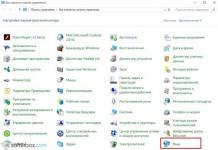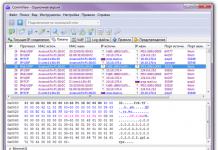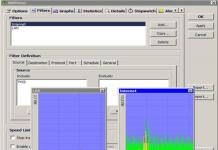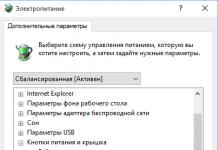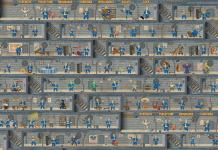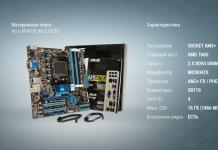Hello, dear blog readers! I have often seen many people present their presentation in slide editing mode. That is, on the right side there are slides, and on the left side there are thumbnails. But this is the wrong demo because there is no animation or full-screen mode, which causes some inconvenience for the presenter. And one of the most popular questions for beginners is how to run a Powerpoint presentation in full screen.
How to make a presentation full screen
There are several ways to do this:
- by pressing the F5 button on your computer keyboard,
- by pressing the Start button on the Slide Show tab (or Slide Show in recent versions)
Slide Show tab in Microsoft PowerPointOn a laptop presentation starts when you press a key combination Fn+F5 from the first slide and to exit the full-screen demo mode, press the Esc key.
If you want to start the show from a specific slide, not from the first one, then select the desired slide in the thumbnail panel and the following options are also possible here:
- by clicking the From current slide button on the Slide Show tab or using a keyboard shortcut Shift+F5(or Slideshow in recent versions)
- In the lower right corner of the editor, click the “Slide Show” icon
 Bottom edge of the presentation editor screen
Bottom edge of the presentation editor screen By the way, to show the presentation in a separate window go to the tab Slide show V Demo Settings and set the switch to the "User controlled (window)" position. This way you can control the size of the demo window. Perhaps this option will also be useful to someone.
Working in slide show mode
There is no interface or mouse pointer dragee visible here. The transition to the next slide can be done using control buttons, and in several ways:
- press the left mouse button on the keyboard,
- down arrow right arrow
- space or Enter
To go back one slide: up or left arrow or Backspace button.
The "Home" button will take us to the first slide, and the "End" button will take us to the last.
Keyboard shortcuts for navigating slide shows
- Change slide or move to a new effect - left click, spacebar, N, Enter, Page down, right arrow, down arrow
- Show the previous slide or animation effect - "P", "Page Up" or "Backspace" key, left arrow, up arrow.
- Go to the specified slide - number, then enter button.
- Dim and restore - "B" or "." key (dot).
- Lightening and restoration - “w” or “,” (comma) key.
- Ending the display - "Esc" key
If you move the mouse down to the left corner, a cursor and several buttons appear. The left and right arrows again allow you to scroll through the slides. The next button is in the form of a pencil. When you click on it, a small list of additional tools will open. With their help, you can make notes on the slide during the demonstration.
Keyboard shortcuts for handwritten notes
- Ctrl+P - replacing the pointer with a pencil
- Ctrl+A - replacing the pointer with an arrow
- Ctrl+E - replacing the pointer with an eraser
- Ctrl+M - show or hide handwritten notes
- E - screen cleaning
Sometimes when demonstrating it is necessary to focus the audience's attention on some element. You can point it with the mouse arrow, and if you press the "Ctrl" key together with the left mouse button, you get the effect of a laser pointer.
Presenter View in PowerPoint
Above was an example of displaying a presentation on one monitor or on two in duplication mode. If you are showing a presentation through a projector, then it is more advisable to use presenter mode in this case.
Here the slide show is displayed on a projector, and on your monitor you also get the opportunity to see thumbnails of all your slides, notes for the slide being shown, the current time and a timer for your presentation.
 Monitor screen in presenter mode
Monitor screen in presenter mode
You won't have to remember what should appear on the next screen, and you will be able to clearly control the rules of your speech.
In the latest version of Microsoft Word, for on-screen viewing, you can launch Presenter view with a keyboard shortcut Alt+F5. In this case, a projector or second monitor is not required.
To enable this mode during your presentation, on the Slide Show tab, in the Monitors group, check the box and select the second monitor mode (marked with a red frame below in the figure)
 Enable presenter mode
Enable presenter mode This mode can be enabled provided that a projector or another monitor is additionally connected to the computer.
I hope this last feature will make your public speaking experience much easier. And the listeners will be satisfied. I wish you successful performances.
PS: Interesting facts about creating a presentation
Dear reader! You have watched the article to the end.
Have you received an answer to your question? Write a few words in the comments.
If you haven't found the answer, indicate what you were looking for.
There are several viewing modes that can be selected from the menu View. The modes presented below are designed to perform the necessary actions in the process of creating and editing a presentation as quickly and efficiently as possible.
· Ordinary. By default, this mode appears as three panels.
· Slide sorter. In this mode, all slides are presented as thumbnails.
This makes it easy to drag and drop them, changing the order of their arrangement in the presentation.
· Slide show. This is a special mode that allows you to preview your presentation and present it on the screen. It checks the finished presentation after adding new slides. This mode is also used to adjust the finished presentation.
· Notes pages. This mode displays a large panel designed for taking notes and giving voice over to your presentation. These notes can also be entered in Ordinary, However, this task is easier to perform in Note Pages mode because the note text input panel is much larger, making it easier to work with.
Selecting a viewing mode can be done using special buttons in the lower left corner of the application window. There is no special button for Note Page mode.
Moving through slides
There are several ways to move from slide to slide. In different modes, moving to a specific slide is carried out differently.
In mode Ordinary you can move from slide to slide. For this purpose you can use:
· panel Structure, located on the left in the application window;
panel bookmark Slides, also located on the left in the application window;
· keys
· move through slides by clicking buttons Previous slide or Next slide, located below the scroll bar;
· dragging the slider along the scroll bar to display the desired slide.
You can move from slide to slide in the mode Slide sorter.
To move to a specific slide, click on its thumbnail.
To format or delete a selected slide, you can use any tool in the program. If you want to open a slide to format text, double-click the slide. The slide will open in Ordinary.
Presentation demonstration
Starting a presentation demonstration can be done either by the View>Slide Show command, or by clicking the button Slide show on the button panel. If you do this using a button, you must first display the first slide of the presentation, since the button starts the demonstration starting from the current slide.
To move from one slide to the next one, press the Enter key or click the left mouse button. You can use the PageUp or PageDown key to move forward or backward through your presentation slides.
During the slide show, the mouse pointer is not visible on the screen, but it appears immediately as soon as you start moving the mouse. Simultaneously with the cursor, an elegant button appears in the lower left corner of the screen, almost merging with the background. Clicking on it brings up a drop-down menu that can also be used to control the progress of the demonstration.

While presenting a presentation, you can also use control buttons and hyperlinks to move to the desired slide.

In order to open a PPTX or PPSX presentation correctly and in full functionality, you must have Microsoft Office 2010 or Microsoft Office 2013 installed on your computer. Earlier versions of Office, for example Microsoft Office 2003, open the presentation, but, alas, do not play sound When you click on the “speaker” icon, problems also arise with viewing videos, animations embedded in the presentation, and displaying 3D fonts.
What should you do if your computer has an outdated version of Office and you cannot use all the material presented in the PPTX or PPSX presentation, or you do not have this software package installed at all? There is a solution - a viewer created by Microsoft itself... We read the description of the program, a guide on downloading the installer from the official Microsoft website, installing it on a computer and working with the viewer.
The Microsoft PowerPoint Viewer allows you to view full-featured presentations created using Microsoft PowerPoint 2010, Microsoft Office PowerPoint 2007, Microsoft Office PowerPoint 2003, Microsoft PowerPoint 2002, Microsoft PowerPoint 2000, and even Microsoft PowerPoint 97. You can also open Password protected Microsoft PowerPoint presentations. You can use PowerPoint Viewer to view and print presentations, but they cannot be edited.
Supported operating systems for installation and operation of the viewer:
Windows 7, Windows Vista (Service Pack 1 and Service Pack 2), Windows XP (Service Pack 3), Windows Server 2003 R2 (x86 and x64), Windows Server 2008.
System requirements:
RAM: 256 MB or more,
270 MB of free hard disk space,
Monitor with a resolution of 1024x768 or higher,
DirectX 9.0c compatible video adapter with 64 MB or more video memory.
The program is not demanding on system resources, so your computer can probably handle it.
How to download
You can download the program installer from the official Microsoft website or from the proposed DepositStorage file storage (without waiting for the download). Let's look below at how to download the program installer from the official Microsoft website...
If the presentation does not open or the sound does not play, if an outdated version of Microsoft Office is installed on the computer or is not installed at all... How can I open a presentation for free, correctly and with full functionality? Material prepared especially for users of our site:
General information
PowerPoint has several views for viewing your presentation: Normal, Slide Sorter, Notes Pages, and Slide Show. One of these modes can be selected as the default. Each mode is designed to solve specific problems. To select the desired mode for working with a presentation, select a command from the View menu bar or click the corresponding mode button in the lower left corner of the main PowerPoint window.
Mode Normal
By default, when you create a new presentation or open an existing one, PowerPoint displays it in Normal view. This mode is the main one for editing slides, that is, filling the slide with text, pictures, diagrams and other objects, as well as for assigning animation effects to these objects.
In Normal mode, the window is divided into three work areas: Slide, Notes area and Presentation Structure area (Fig. 2.1). Also, by default, in this mode, three toolbars are displayed on the screen - Standard, Formatting And Drawing.
The Slide area displays the current or created slide in a fairly large format for easy editing and filling.
Below is an area for inserting a note or notes on the slide. This text does not appear on the slide itself, but it may be useful to the speaker during his presentation.
The Presentation Structure area is displayed on the left side of the screen. It consists of two tabs – Structure and Slides. By default, the Slides tab is displayed. On it, all the presentation slides are placed in a reduced size in a list, which allows you to quickly change their places if necessary. This is also convenient for activating the desired slide - just click the corresponding thumbnail slide on this tab, and the active slide will be displayed in the Slide area.
The Structure tab also displays the entire presentation, but each slide is represented by its title and the text it contains. Other objects (pictures, diagrams, etc.) are not displayed on the Structure tab. Questions about creating a presentation using the Structures tab are discussed in Chapter 8).
Tip: If necessary, you can resize screen areas by dragging their borders with the mouse.
Inserting and deleting slides
In Normal viewing mode, in addition to editing, you can add or delete slides.
To insert a new slide, do one of the following:
¨ Execute the Insert/Create Slide command;
¨ Click the New Slide button on the Formatting toolbar;
¨ Select the Create slide command from the context menu.
To delete a slide, select it in the Outlines area on the Slides tab and:
¨ press the Delete key;
¨ execute the command Edit/Delete slide;
¨ select the appropriate context menu command.
In any presentation viewing mode, there are several ways to move through the slides. A mouse and keyboard are used for this. In Normal mode, the following movement methods are available:
¨ Using the keys
¨ Using the scroll bar;
¨ By clicking on the slide thumbnails on the Slides tab in the Presentation Structures area;
¨ By clicking on the icon of the required slide next to its number on the Structure tab in the Presentation Structures area.
Using the Slide Sorter
Slide Sorter mode is the only mode that allows you to view all the slides in a presentation as thumbnails. This mode is similar to the Slides tab in Normal mode.
Upon completion of creating and editing a presentation, it is the Slide Sorter mode that gives a complete picture of the entire presentation, simplifying its reorganization (Fig. 3.1).
This mode allows you to perform the following tasks: change the order of slides, add and remove slides, manage slide transition effects, and preview slide transition animation effects.
Rice. 3.1. Presentation window in preview mode
Slide sorter
In mode Slide sorter an additional Slide Sorter toolbar is displayed (see Figure 3.2). This panel contains the following groups of buttons: the first three buttons - for hiding the slide, setting the slide display time and creating the final slide, the next group - for entering notes on the active slide, and the last group of buttons - for applying slide transition effects, for changing the design template slide and a button to create a slide.
Rice. 3.2. Slide Sorter Toolbar
Sorting slides in a presentation
To change the order of slides within a presentation, use the drag-and-drop method, i.e. Select the slide and, without releasing the left mouse button, move the slide to the desired location. In this case, a vertical bar (cursor) appears that follows the slide being moved. Having reached the desired location, release the mouse button and the slide will be inserted into the specified location. If you need to move a group of slides, select them using the Shift key (if the slides are in a row) or Ctrl (if the slides are out of order) and repeat the action described above.
Copying slides
Sometimes when creating a presentation you need to copy one or more slides. It is most convenient to do this in the Slide Sorter mode. First, select the slide or group of slides you want to copy and do one of the following:
¨ Execute the command Edit/Copy slide;
¨ Click on the button Copy on the toolbar Standard ;
¨ Press the keyboard shortcut
¨ Select a team Copy context menu.
¨ Performing any of these actions copies the slides to the clipboard. You can paste copied slides anywhere in your presentation by doing one of the following:
¨ Execute the command Edit/Paste ;
¨ Click the button Insert on the toolbar Standard ;
¨ Press the keyboard shortcut
¨ Select a team Insert context menu.
Navigate through presentation slides
In Slide Sorter mode, you move between slides using the mouse or cursor keys. Double-clicking a slide thumbnail opens it in Normal mode. If you can't see all the slides on the screen, use the scroll bar.
Inserting and deleting slides
Inserting new slides and deleting unnecessary slides in the Slide Sorter mode is similar to the Normal mode.
Hiding a slide
Sometimes, when preparing for a speech in front of a certain audience, it is necessary to show not all the slides of the presentation, or if the presentation is educational and there are slides with tests or questions, then it makes sense to create slides with the correct answers, but hide these slides while presenting the material.
You can hide a slide in both Normal and Slide Sorter modes. But in Slide Sorter mode, there is a button for this action on the Slide Sorter toolbar.
So, to hide a slide, follow these steps:
¨ Select the slides that you want to hide;
¨ Execute the Show slide/Hide slide command or use the button of the same name on the toolbar or select the context menu command.
A hidden slide in the Slide Sorter mode is indicated by a crossed out square on the number of the hidden slide.
To show a slide at the right time, select it and perform the same action as to hide the slide.
Controlling the slide transition effect
Using special transition effects between slides allows you to create a bright and memorable presentation. The application and use of smooth transition effects between slides allows the audience to tune in to the perception of new material in the interval between the removal of the current one and the appearance of the next slide. Issues of setting up slide transitions were discussed in detail in Chapter 4. As for the Slide Sorter viewing mode, it should be noted that it is in this mode that it is preferable to configure slide transition effects if you need to apply one effect to several slides.
To do this, select the desired slides using the Ctrl key and click the Change button on the Slide Sorter toolbar. This will open the Slide Change task pane. This panel looks the same as in Normal mode when executing the Slide Show/Slide Change command. Then proceed as described in Chapter 4.
When working in the Slide Sorter mode, you will see small effect icons under the thumbnails, by clicking on which you can see the selected slide change effect.
Tip: If the presentation is bright, then it is advisable to choose the effects of sudden slide changes. Gradual and smooth transitions are used for business and scientific presentations, i.e. more reserved.
Slide show mode
Slide Show mode is a special presentation display mode that allows you to view a full-screen presentation in action. It is important to know that if you select any of the presentation slides in any view mode, and then start Slide Show mode, the show will start from that slide, even if it is not the first slide in your presentation.
It should be noted that after enabling Slide Show mode, when you hover your mouse over the lower left corner of the screen, the Slide Show toolbar will be displayed there. The buttons on this panel are used to control the display of the presentation. You can also control the display in Slide Show mode through the context menu anywhere on the screen.
You can exit this mode by pressing the key
Tip: In addition to the methods mentioned above for turning on presentation viewing modes, you can turn on the Slide Show mode by pressing the key
Adding notes.
So, PowerPoint has another special mode for viewing a presentation - the Note Pages mode. This mode is intended directly for the presenter, namely for entering notes on presentation slides. This is the only mode that does not have a dedicated button on the mode bar. Therefore, you can switch to this mode only through the View/Notes Pages command. In principle, you remember that notes can also be entered in Normal mode in the notes area.
Note Pages mode displays a separate page, similar to a document page in MS Word, with a slide displayed at the top and a text entry area at the bottom. Text in notes can be formatted in the usual way using the Format menu command. You can also change the background of your notes by running Format/Note Background and selecting the background you want.

Rice. 3.3. Screen view in mode Notes pages
The text of the notes can be printed and used during the report.
Tip: You cannot edit a slide in Notes Page view.
Selecting Default Mode
If you select Default Mode, PowerPoint will always start in the default mode. To set the default mode, follow these steps:
¨ Execute the Tools/Options command and open the View tab;
¨ In the Default View dialog box, select the desired mode.

Rice. 3.4. Selecting a Default View Mode
Tip: By default, PowerPoint starts in Normal mode with the pane open Presentation structure. Changes to the size of areas in Normal mode or the mode itself are saved and subsequently played back along with the presentation in which the changes were made. However, these settings are not saved outside of the associated presentation. To set a default mode when you launch PowerPoint, follow the steps above.
Create a new slide.
Insert a picture into a slide.
Creation of presentations.
Every presentation PowerPoint t consists of a set of slides. Creating a presentation is all about arranging text and objects on slides.
When creating each presentation in PowerPoint the same sequence of actions is performed:
1) designing a presentation using a wizard or based on a template;
2) adjusting the presentation layout and formatting the slides;
3) adding sound effects, music files and videos to the slide;
4) setting the slide show time and creating animation effects;
5) preparation of handouts (printed) materials and speaker notes;
6) demonstration of the presentation.
At Microsoft PowerPoint Animation effects are also implemented, enriching presentations with unexpected and impressive options for reproducing individual elements of each slide. The text can be made to appear “in a rush” from afar, from the side, etc. There is also a mechanism for checking the spelling of the presentation.
In order to insert a drawing or picture into a slide, you must select “ Menu » à « Insert » à « Drawing » à « Images » and a hint will appear in the lower right corner « Collection of pictures " From the opened " Microsoft Office Collections » choose your favorite image and right-click on “ Copy» then go to the slide and insert picture to slide.
To create a new slide, you must enter " Menu » à « Insert » à « New slide " (or " Create slide »).
You can also select the “” button on the toolbar Create slide».
Slides with tables and diagrams.
To insert a table or chart into a slide, just go to “ Menu» à « Insert» à « Table" or " Diagram».
Another way to insert a table or chart into a slide is to select the table or chart button on the toolbar.
If you are creating a presentation using design templates, then you need to select the appropriate layouts containing a table or chart and, after applying them, double-click on the table or chart icon that appears. Next, you only need to adjust them in accordance with the presentation being created. (Set the required number of rows and columns. Or add/remove rows/columns.)
PowerPoint provides the ability to work and view information on the screen in various modes. The mode is selected taking into account the type of operations performed (entering text, viewing its structure, creating a note, inserting a graphic object into a slide). IN PowerPoint There are the following main viewing modes:
« Ordinary» (« Normal") mode makes it easier to do many things, including adding new slides, editing text and entering notes, and moving around the presentation while editing it.
« Structure mode» allows you to enter notes in a specially designated field for use during the slide show.
« Slide mode» is most convenient for planning and organizing the main points of the presentation. In this mode, you can view the development of these points from slide to slide.
IN " slide sorter mode» (« Slide Sorter") displays thumbnails of all presentation slides with text and graphics. In this mode, you can view all slides in the established sequence, add, delete and move slides using the toolbar buttons. With the Slide Sorter, you can set the intervals at which slides are shown during a presentation and set animated transitions when changing slides. However, you cannot edit text or embed objects in this mode.
Mode " Slide show» is designed so that the user can see the results of his work. In this mode, slides, starting with the current one or the selected one, are displayed in turn, occupying the entire screen. Press the Enter key to return to the previous mode.


